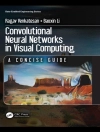This book presents a comprehensive, systematic approach to the development of vision system architectures that employ sensory-processing concurrency and parallel processing to meet the autonomy challenges posed by a variety of safety and surveillance applications. Coverage includes a thorough analysis of resistive diffusion networks embedded within an image sensor array. This analysis supports a systematic approach to the design of spatial image filters and their implementation as vision chips in CMOS technology. The book also addresses system-level considerations pertaining to the embedding of these vision chips into vision-enabled wireless sensor networks.
Describes a system-level approach for designing of vision devices and embedding them into vision-enabled, wireless sensor networks; Surveys state-of-the-art, vision-enabled WSN nodes; Includes details of specifications and challenges of vision-enabled WSNs; Explains architectures for low-energy CMOS vision chips with embedded, programmable spatial filtering capabilities; Includes considerations pertaining to the integration of vision chips into off-the-shelf WSN platforms.Inhaltsverzeichnis
Introduction.- Vision-enabled WSN Nodes: State of the Art.- Processing Primitives for Image Simplification.- VLSI Implementation of Linear Diffusion.- FLIP-Q: A QCIF Resolution Focal-plane Array for Low-power Image Processing.- Wi-FLIP: A Low-power Vision-enabled WSN Node.- Case Study: Early Detection of Forest Fires.












